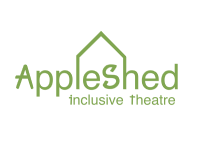29th January 2022 | Beth Adams
Stories are important to all of us. Our own stories, other people’s, and the ones we build together. National Storytelling Week allows us to have a space where we can explore how we tell and experience these stories. This year, the Society for Storytelling has set the theme as ‘Your Story ~ My Story’. At AppleShed, we’ll be celebrating the collaborative approach that storytelling can take!
Storytelling is a form of entertainment, but it’s also about education, culture, family, community and everything in between. In theatre, storytelling is an essential part of the art. It all starts with an idea, and when the product is ready to go we get to sit as an audience and experience that story together. On the stage, actors exist as characters and embody their lives. Directors get to see the whole story from start to finish and think about how it will all unfold. Storytelling becomes an experience that includes so many different people, and whilst we’re all in the same room together, we all have a different view. Outside of the performance, storytelling exists within the very culture of the theatre. Have you ever heard of ghosts on the stage, in the historic buildings and in the stalls? There are stories everywhere within a theatre, from the traditions that have been passed down and from every storyteller before us. It has all become an important and vibrant part of this culture.
When we think of storytelling, we think of words. Spoken or written, passed through generations or texted to a friend, words are how we communicate. But words can’t be it, and often aren’t enough. We know that other forms of communication, other forms of telling, can be more useful, more insightful, and more inclusive. In our workshops celebrating storytelling, we’ve looked at using images and art to tell stories. What can we see in pictures that words can’t say? What we learnt is that using images can tell us details about stories we might have otherwise forgotten. Using images can let our imaginations stretch further than what we know to be true. We can play with these ideas in a way that words don’t allow. Moving into next week, we’ll be finding more ways that we can tell stories and what advantages different methods have. Can a story be told through dance? Can a story be told in silence?
The more ways in which we can explore storytelling, the more stories get told. When we expand the borders of what storytelling is, and how we can communicate stories, we allow room for others who may not have been afforded the space before to come in and share what they know, what they care about, or what needs to be said. At AppleShed, we are doing our part to create that space, but there is always more to do. We welcome the stories that come from all of us and we aim to make more together.
